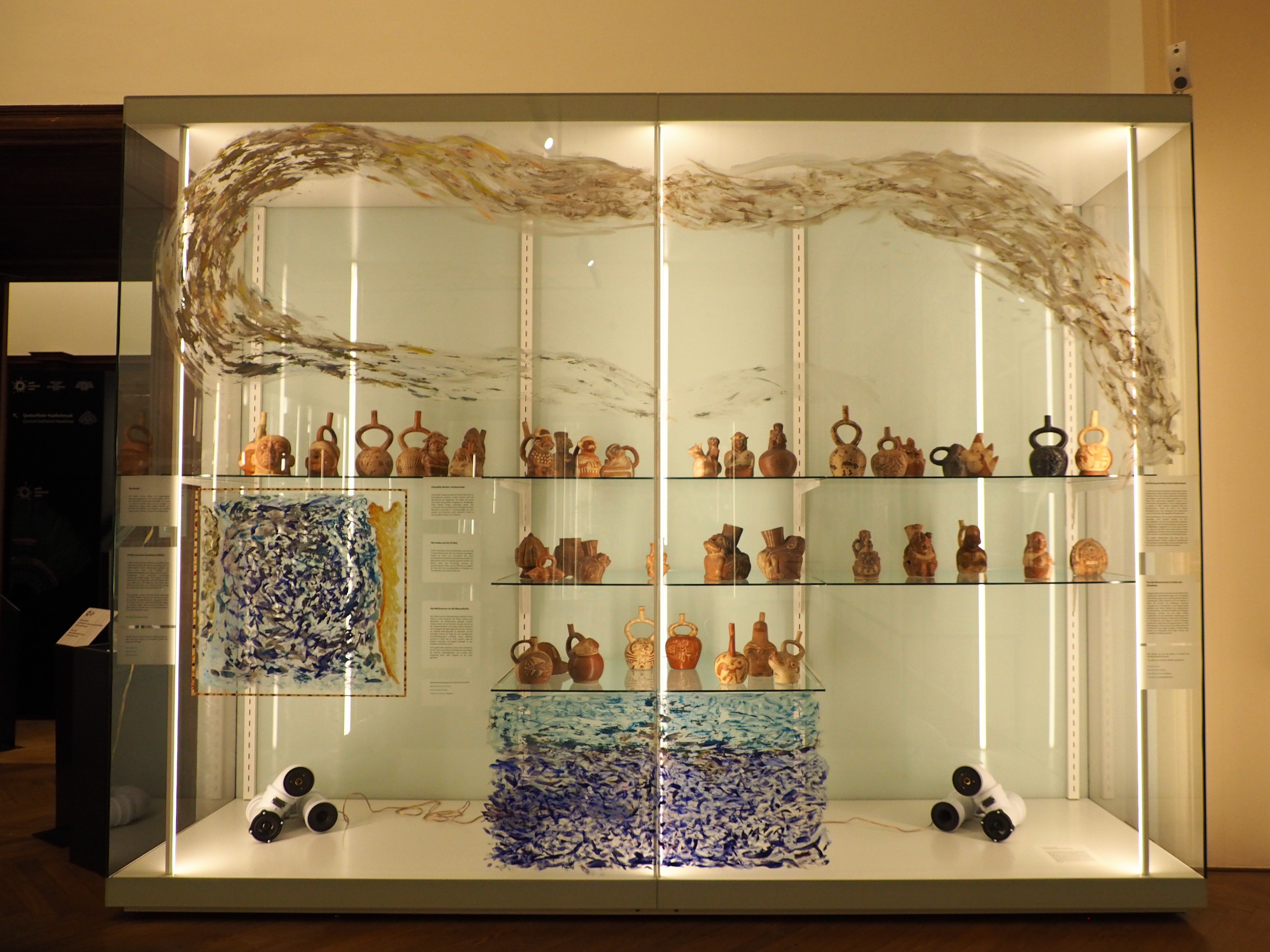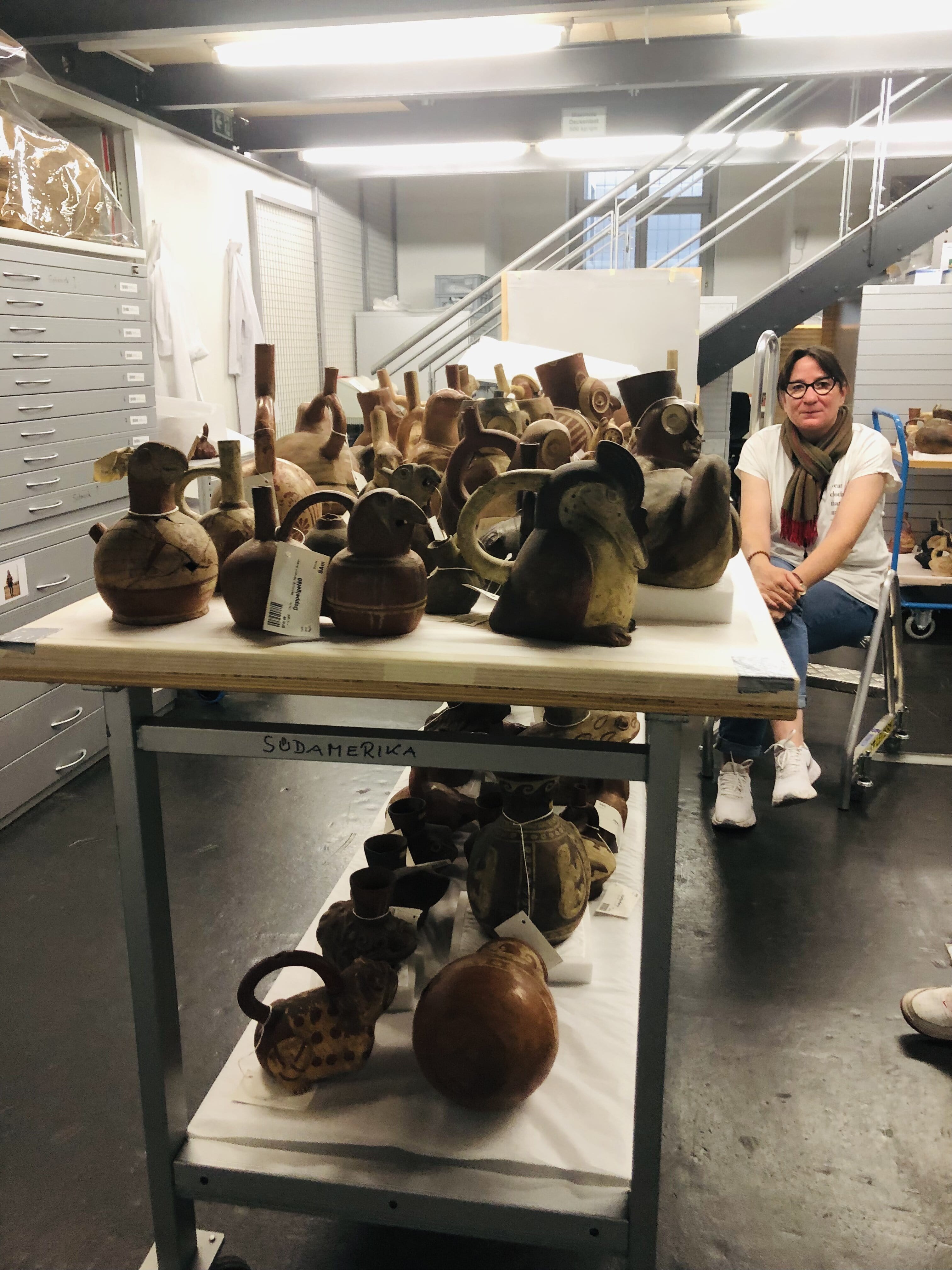Sacrifices in precarious times: from the Moche culture to the current climate crisis

Around 1500 years ago, the Moche culture in the arid northern coast of Peru performed human sacrifices during severe El Niño events to mitigate the climatic disasters caused by this phenomenon [1]. About once every 10 years, El Niño results in torrential rains that flood the land, destroying houses and crops. Additionally, the warm oceanic waters coming from the western Pacific Ocean changes the food web in the sea drastically, impacting local fishery sources. That not being enough, the aftermath of this climatic phenomenon shifts to the opposite spectrum: extreme and prolonged droughts that ultimately affect food security. This was not unknown to the Moche back then; in fact, they probably vanished due to the precarious conditions that followed an extreme El Niño event around the 8th century.
Sacrificial rituals connected the Moche and the
uncontrollable forces of their fluctuating environment, by offering human tribute to higher powers in honour of
nature. In current times though, the word sacrifice has
gained new meanings, taking it out of its religious context. One example for
this are so-called “sacrificial zones”, hazardously contaminated areas adjacent
to extractive industries where the health of people is constantly under risk
[2]. This term dates back to the times of the Cold War, when neighborhoods
populated by minorities and low-income communities were suffering the
radioactive pollution from nearby mining and uranium processing for the
development of nuclear weapons. Up until now, these sacrifices exemplify the
social inequality that characterizes the adverse effects of climate change [3].
Along the way, sacrifice stopped being an act of caring and has instead become
an unjust consequence of human actions.

In the Weltmuseum Wien collection abound Moche ceramic vessels with the forms or paintings of animals and plants that are part of the ecology affected by El Niño phenomenon: frogs, seabirds, owls, crabs, sea lions, fishes, foxes, corn and manioc, amongst others. As part of the TAKING CARE Project, an experimental showcase exhibiting these ceramic pieces in the context of the ecological impact of El Niño phenomenon and their sacrificial rituals is now ready to be visited in the museum’s Galleries of Marvels. It features contemporary artistic interventions by Alfredo Ledesma Quintana and Michael Alves. Altogether, we invite visitors to revise our relationship to nature and reflect about ways of becoming allies to our changing environment. What can we learn from the Moche in the current times of climate change?
Engage with us on a conversation using our hashtags! #mochelessons #climatecrisisforme #naturemeans
I start: #mochelessons: #climatecrisisforme is a reason to redefine my learned worldview.
References
[1] Bourget, Steve. Sacrifice, violence, and ideology among the Moche: the
rise of social complexity in ancient Peru. Austin TX, University of Texas Press, 2016.
[2] Lerner, Steve. Sacrifice zones: the front lines of toxic chemical exposure in the United States. Cambridge MA, The MIT Press, 2010.
[3] Islam, Nazrul and John Winkel. "Climate Change and Social Inequality". UN Department of Economic and Social Affairs (DESA) Working Papers, No. 152, UN, New York, 2017, https://doi.org/10.18356/2c62335d-en.